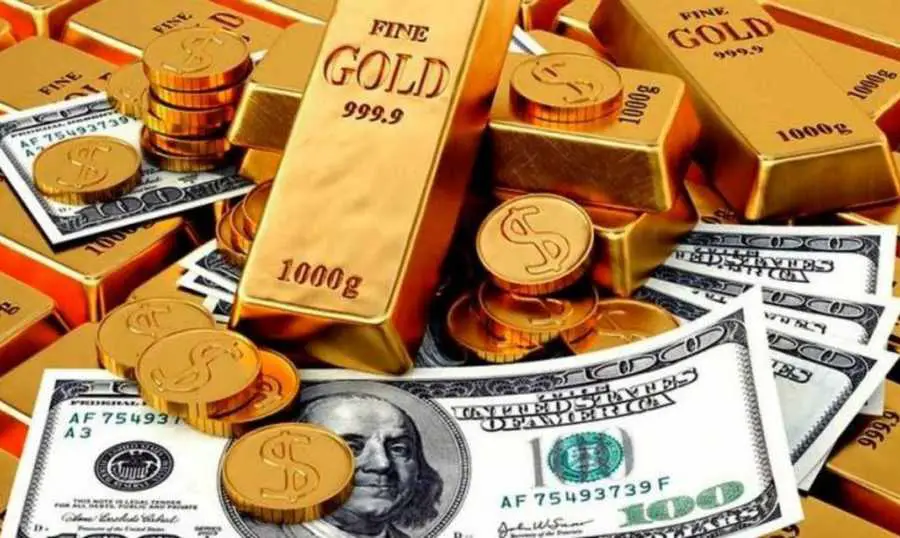لبنان يخطو نحو الحل: استثمار ذهب لبنان لرد أموال المودعين
مع الارتفاع الكبير في أسعار الذهب في الآونة الأخيرة، بدأت الأنظار تتوجه نحو ذهب لبنان الذي شهد ارتفاعًا ملحوظًا في قيمته، لتصل إلى نحو 30 مليار دولار. في ظل هذه الزيادة الكبيرة في القيمة، بدأ الحديث يتزايد حول ضرورة استثمار جزء من هذه الثروة بما يسهم في إعادة أموال المودعين وتحريك العجلة الاقتصادية، مع الحفاظ على الذهب وعدم اللجوء إلى بيعه.
هل ذهب لبنان ملك للدولة؟
في تصريح الدكتور محمود جباعي، الباحث والخبير الاقتصادي، أوضح أن ذهب لبنان الموجود في مصرف لبنان المركزي يُعد من أهم الثروات التي يمتلكها المصرف. وأشار جباعي إلى أن هذا الذهب هو ملك للمصرف وفقًا لـ قانون النقد والتسليف، وبالتالي هو ليس ملكًا للدولة اللبنانية أو الشعب اللبناني. وأضاف أن أموال المصرف وموجوداته غير مرتبطة بأموال الدولة أو أصولها، وأنه على الرغم من اللغط الذي يشير إلى أن الذهب ملك الدولة، إلا أن المصرف هو الوصي عليه وصاحب الملكية.
استثمار الذهب لتطوير الاقتصاد
وأضاف جباعي أنه يمكن تثمير هذا الذهب دون اللجوء إلى بيعه، مؤكدًا أنه ضد فكرة بيع الذهب أو أي أصول أخرى للمصرف أو الدولة، لكنه في الوقت نفسه مؤيد لفكرة الاستثمار في هذا الذهب. استثمار الذهب قد يعود على لبنان بمبالغ كبيرة يمكن استخدامها في تطوير الاقتصاد ورد أموال المودعين. وأوضح أن العديد من المصارف في دول مختلفة يمكنها أخذ هذا الذهب لتستثمر به، وبالتالي تُدفع لمصرف لبنان نسبة من الأرباح السنوية الناتجة عن هذا الاستثمار، والتي يمكن أن تكون كافية لسداد جزء من المبالغ المستحقة للمودعين.
الذهب اللبناني: أين يوجد؟
كشف جباعي أن ثلثي احتياط الذهب اللبناني موجود داخل لبنان، حيث يتواجد 271 طنًا، 70% منها في لبنان و30% في قلعة فورت نوكس في الولايات المتحدة الأميركية، التي تحتفظ بذهب العديد من الدول. وبحسب الخبير الاقتصادي، يمكن استثمار الـ70% الموجودة في لبنان أو حتى الـ30% الموجودة في الولايات المتحدة، مثلًا من خلال المصارف البريطانية أو حتى المصارف في شرق آسيا، حيث يمكن تأجيرها لهذه المصارف لضمان عملاتها الوطنية.
القيمة التراثية للذهب اللبناني
وأضاف جباعي أن هذا الذهب ليس مجرد ذهب عادي، بل له قيمة تراثية، مما يعني أنه أغلى من الذهب العادي بمعدل 10-15% عن قيمته الحالية. وهذا يرفع من قيمته الاقتصادية بشكل ملحوظ.
خطة شاملة للاستثمار
وفي سياق الحلول المقترحة، أكد جباعي أنه من الممكن الاستفادة من الذهب في خطة شاملة بين الدولة اللبنانية والمصرف المركزي والمصارف اللبنانية. تقوم الدولة بتثمير أصولها، بينما يُستثمر الذهب الموجود في مصرف لبنان، وتدفع المصارف من السيولة الموجودة لديها، وهو ما يُعتبر حلًا مناسبًا في المرحلة القادمة لتحقيق الاستقرار المالي في لبنان ورد أموال المودعين.
English Version:
Lebanon Moves Towards a Solution: Investing Lebanon's Gold to Repay Depositors' Funds
With the recent sharp increase in gold prices, the focus has shifted towards Lebanon's gold reserves, which have now reached a value of approximately $30 billion. In light of this significant increase in value, discussions have intensified about the need to invest part of this gold to help repay depositors' funds and stimulate the economy, all without selling the gold.
Is Lebanon's Gold Owned by the State?
In a statement by Dr. Mahmoud Jebai, an economic researcher and expert, he clarified that the gold in Lebanon held by the Central Bank of Lebanon is one of the most important assets owned by the bank. Jebai explained that the gold belongs to the bank under the Monetary and Credit Law, meaning it is not owned by the Lebanese state or the Lebanese people. He also pointed out that the assets of the bank are independent of state funds or state assets, and while there is a common misconception that the gold is state-owned, it is actually the bank’s property and under its guardianship.
Investing in Gold to Develop the Economy
Jebai added that the gold can be invested without resorting to selling it, stressing that he is against selling gold or any other assets of the bank or state. However, he strongly supports the idea of investing the gold. By doing so, Lebanon could generate profits that could be used to develop the economy and repay depositors' funds. He also pointed out that many banks in other countries could take the gold and invest it, with the profits from this investment going to the Central Bank of Lebanon. This could result in significant sums that could be used to repay depositors.
Where is Lebanon's Gold Stored?
Dr. Jebai revealed that two-thirds of Lebanon’s gold reserves are located within Lebanon, with 271 tons of gold stored, 70% of which is in Lebanon and 30% in Fort Knox in the United States, where several countries' gold reserves are held. According to Jebai, Lebanon could invest the 70% of the gold within the country or even the 30% in the United States, possibly by leasing it to British banks or Asian banks, which would ensure the countries' currencies or make profits that could be used to repay depositors.
The Heritage Value of Lebanon’s Gold
Jebai also emphasized that this gold is not just ordinary gold; it has a heritage value, which means its worth is 10-15% higher than its current market value. This increases its economic value significantly.
A Comprehensive Investment Plan
In terms of proposed solutions, Jebai confirmed that it is possible to benefit from Lebanon’s gold in a comprehensive plan involving the Lebanese state, the Central Bank, and the Lebanese banks. The state would invest its assets, while the Central Bank would invest the gold reserves, and the banks would contribute from their existing liquidity. This approach is considered a viable solution for achieving financial stability in Lebanon and repaying depositors’ funds.
Translated by international scopes team
المصدر: ليبانون ديبايت
 International Scopes – سكوبات عالمية إجعل موقعنا خيارك ومصدرك الأنسب للأخبار المحلية والعربية والعالمية على أنواعها بالإضافة الى نشر مجموعة لا بأس بها من الوظائف الشاغرة في لبنان والشرق الأوسط والعالم
International Scopes – سكوبات عالمية إجعل موقعنا خيارك ومصدرك الأنسب للأخبار المحلية والعربية والعالمية على أنواعها بالإضافة الى نشر مجموعة لا بأس بها من الوظائف الشاغرة في لبنان والشرق الأوسط والعالم




